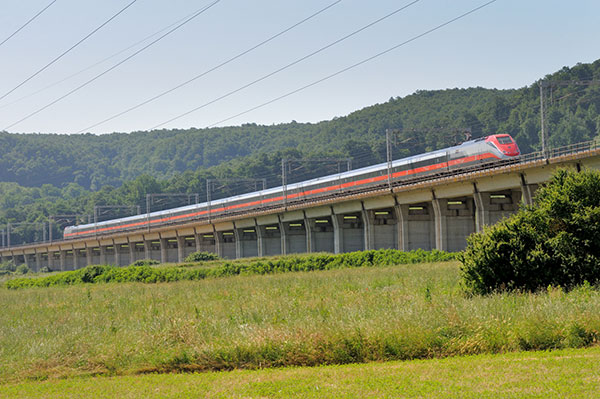An Innovative Digital Platform for Urban Mobility
How can research contribute to building a smarter and more sustainable urban mobility ecosystem?
Driven by this question, Mario Tartaglia, Head of the FS Research Centre of the FS Group, together with Stefano Pellecchia, Andrea Fiduccia, and Luca Beccastrini also from the FS Research Centre, presented the paper “FS Group Projects for the National Centre for Sustainable Mobility (MOST)” at the 15th International CTV Congress (City and Virtual Territory).
Ferrovie dello Stato Italiane Group is committed to creating an ecosystem of sustainable mobility and integrated logistics, supported by interconnected and resilient infrastructures. Particular attention is devoted to the development of a data platform for transportation data, models, and analytics. The project, developed by the FS Research Centre in collaboration with the University of Rome La Sapienza, is based on the existing Strategic Information Management System (SIMS) of the FS Group, a geospatial data platform designed for the analysis and modelling of mobility and its interaction with social, economic, territorial, and environmental systems.
The goal of this project is to extend the functionalities and application scope of the SIMS platform to the urban domain, providing public administrations with data and decision-support tools for mobility policies and the evaluation of interventions.
The evolution of this digital platform, currently in its final development phase, will offer: a highly interoperable geospatial framework, interoperability between the application components of the geospatial framework and the business intelligence and transport modeling engines, the possibility of interfacing with any database and data source, a web portal with a public area and a reserved area that offers multimedia content, GeoBI dashboards, GIS apps and transport models whose contents are customized according to user profiles. And ultimately two mobility models: a multimodal national transport model designed to estimate medium, long and short distance journeys made by residents in Italy; an urban transport model, which allows the analysis of mobility at different scales, from the level of a large area to specific urban corridors.
The two models are integrated and "complementary". In fact, a key strength of this initiative is its multi-level modelling approach, which combines national demand models with urban-scale simulations.
The project was showcased within the Special Session “Sustainable Urban Mobility in MOST. Strategies and Tools” with the ultimate goal of enhancing accessibility, reducing congestion, and supporting the development of more sustainable cities. In fact, the Special Session aims to share, through contributions from several partners, the preliminary outcomes of research activities carried out within Spoke 9 – Urban Mobility of the National Centre for Sustainable Mobility (MOST), funded by Italy’s National Recovery and Resilience Plan (PNRR).

